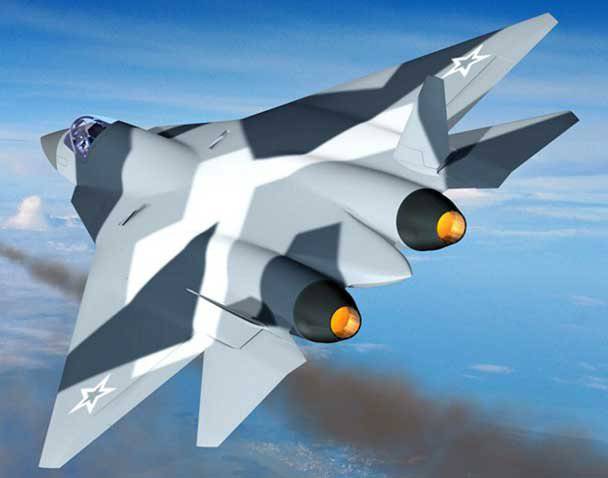Conflicting Trends, India - Russia

Particularly alarming should be recognized as the loss of positions in the air defense sector and the military transport segment aviation.
The Indian Air Force plans to use at least 214 fifth-generation fighter jets, which are being developed in conjunction with the Russian Federation.
"We want to get 166 single and 48 double promising combat vehicles (FGFA) by 2017 year," - said the commander in chief of the Indian Air Force, Air Marshal Norman Anil Kumar Brown. “Until now, this contract was at a preliminary stage. “In the 2012 year, when negotiations begin on the next stage - directly designing the aircraft, it will require great efforts to advance from both sides,” the commander stressed and added: “According to preliminary estimates, in 2017, we will be able to adopt the first batch of super modern fighters, although, of course, much will depend on the test results. "
However, in the field of military-technical cooperation between the two countries, not everything is so good. The relative decline in Russia's presence in the arms market of the South Asian power, the unsuccessful participation of the domestic aviation industry in the largest tender for the supply of aircraft to parts of Indian fighter aircraft worth 10 billion dollars are not only external, but also domestic factors, the deputy director of the Center for Analysis of Strategies and Technologies (TsAST) ) Konstantin Makienko.
“In the formation of a negative image of our products in the Indian market,” he says, “Russian exporters, unfortunately, are making their contribution. First of all, this concerns frequent delays in the fulfillment of contractual obligations and unsatisfactory after-sales service. ”
The last example of this kind was the delay in the delivery of the second batch of Talwar-class frigates and the delay in leasing the multipurpose nuclear submarine of the 971I project. “Overcoming these negative trends is an absolute imperative for further positive Russian-Indian military-technical cooperation,” said the deputy director of the Center.
Among external factors, he cited the rapid growth of India’s financial capabilities and the improvement of the quality of its human potential, including military personnel. This leads to a gradual transition of Indian demand from the middle price and technology segment, dominated by Russia, to a higher price and high-quality niche, in which western positions are stronger.
According to Konstantin Makienko, conflicting trends have been observed in relations between Moscow and Delhi in the area of military-technical cooperation in recent years. India for about five years is the largest buyer of Russian weapons. Presumably, in the 2005 – 2006 years, the Indians took a leading position in terms of the volume of newly signed contracts, and in 2007, they were ahead of China in terms of the cost of transfers.
The Deputy Director of the Center for Analysis of Strategies and Technologies emphasized that, as of the beginning of 2011, Delhi accounted for about a third of the portfolio of orders from Russian exporters of weapons, or about 12 billion dollars. Major military-technical projects remain at the implementation stage - re-equipment and modernization of Vikramaditya aircraft carrier, sale and licensed production of Su-30MKI fighters, supply of MiG-29K deck fighters, and multi-purpose Mi-17В5 helicopters, construction of three 11356M frigates.
“Moreover, India has become the only country in relations with which Russia has moved from the trade paradigm of cooperation to a cooperative model of relations. Within its framework, joint military-industrial projects are implemented on the basis of the principle of the “risk of divided partnership”. The most important of these projects is the joint development program of the fifth generation FGFA fighter and the creation of a heavy long-range supersonic anti-ship missile BrahMos, as well as the stagnant, but nevertheless formally implemented, program of the MTA medium military transport aircraft, ”said Makienko.
According to the expert, these projects became possible thanks to the colossal tradition of bilateral military-technical relations, which have been in existence for more than half a century, as well as the phenomenal harmony of the Russian-Indian military-political interests. In a competitive world, Russia is interested in maximally military, economic, technological strengthening of India and is ready to transfer or jointly with Delhi to develop such technologies, the source of which will not be any other country in the world.
“In this sense, the development of cooperation in the field of multi-purpose nuclear submarines, as well as helping India to improve the quality of its various ballistic missiles, is very promising. At the same time, the initiation of cooperation in strategic areas should be conditioned by the placement of new Indian contracts in the field of conventional weapons, ”stated the deputy director of the Center.
At the same time, according to him, Delhi is consistently pursuing a course to diversify sources of weapons and technology, as a result of which Russia's share in the Indian market is gradually decreasing.
“In fact, it was the Europeans, the Israelis, and recently the United States, not Russia, became the beneficiaries of the rapid growth of the capacity of the Indian arms market. Particularly worrying is the loss of Russian positions in the air defense sector in favor of Israelis and in the military transport segment in favor of the United States, as well as the fact that the Russian MiG-35 did not qualify for the MMRCA cost 10 billion dollars, ”stressed Konstantin Makienko.
Information